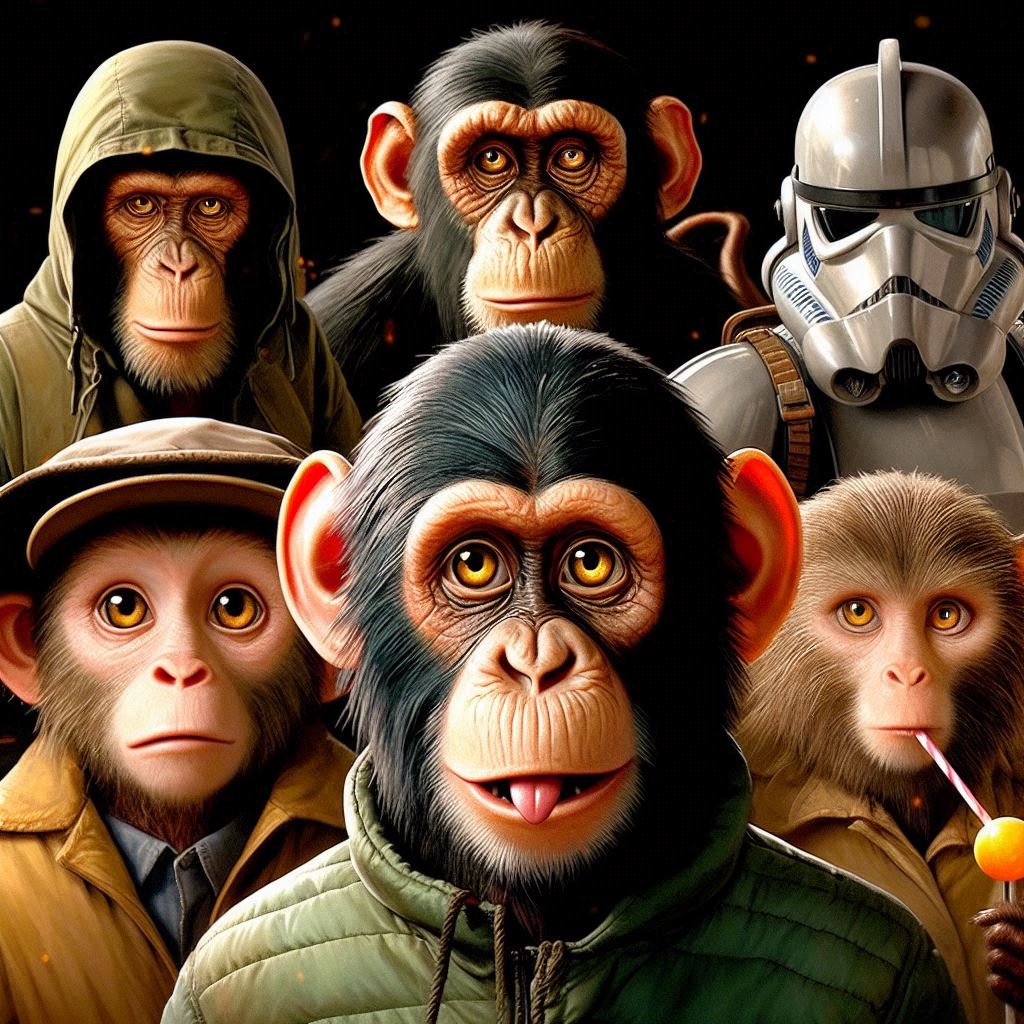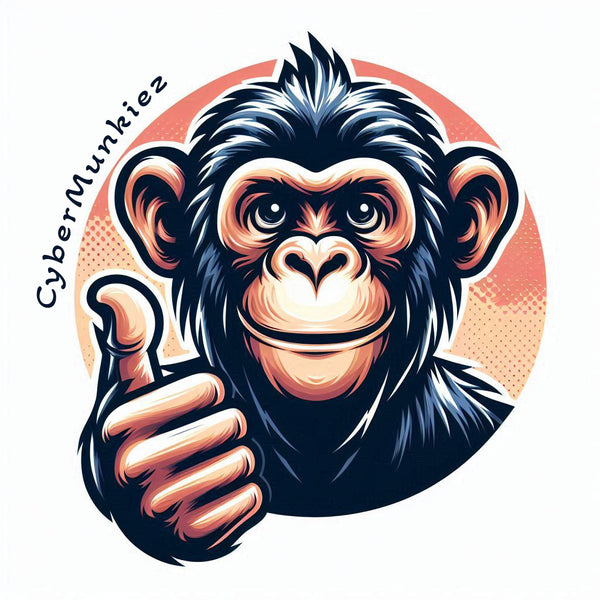
Monkeys in Film and Television: Iconic Appearances
Share
Monkeys in Film and Television: Iconic Appearances
Monkeys have captured our imagination for centuries, and their portrayal in film and television has only enhanced their status as beloved characters in pop culture. From mischievous sidekicks to heroic figures, monkeys have been featured in a variety of roles that resonate with audiences worldwide. In this article, we’ll review some of the most iconic monkey characters in film and television and examine how they’ve impacted popular culture.
The Evolution of Monkeys in Media
Monkeys have long been associated with human-like characteristics—intelligence, curiosity, and humor—which make them ideal candidates for roles in film and television. Over the years, they’ve been featured in everything from animated films to live-action blockbusters, providing entertainment, humor, and even thought-provoking commentary on society and nature.
Early Appearances: Silent Films to Golden Age Cinema
Monkeys made their first notable appearances in film during the silent film era. Early portrayals were often comedic, playing off the monkeys’ playful and unpredictable behavior. By the 1930s and 1940s, monkeys became common sidekicks in family films, often paired with human protagonists to add comic relief or adventure.
Iconic Monkey Characters in Film
1. King Kong (1933)
Arguably the most famous monkey in cinema, King Kong is a legendary giant gorilla who captivated audiences with his tragic tale. Originally released in 1933, King Kong tells the story of a monstrous gorilla who is brought to New York City, where he wreaks havoc before meeting his untimely demise. The film’s emotional depth and the gorilla’s connection to the beautiful woman, Ann Darrow, made King Kong a lasting symbol of the bond between humans and animals. The character has appeared in numerous remakes, sequels, and spin-offs, cementing Kong’s place in cinematic history.
2. Curious George
One of the most iconic monkeys in children’s literature, Curious George transitioned from the pages of books to the big screen in a variety of films and television series. The mischievous little monkey, often found getting into trouble due to his curiosity, became a beloved figure in children’s media. Since debuting in 1941, Curious George has appeared in multiple films, animated series, and even a live-action film in 2006. The character has an enduring legacy as a gentle and relatable figure for young audiences.
3. Caesar (Planet of the Apes Series)
The Planet of the Apes franchise is one of the most notable film series to feature intelligent primates, with the character of Caesar standing out as the leader of the ape revolution. Played by Andy Serkis in the recent reboot trilogy, Caesar’s rise from an abused pet monkey to a revolutionary leader has been a key part of the series’ themes of freedom, equality, and survival. His character explores the deep emotional connections between humans and apes, making him a cultural symbol of resistance and intelligence.
4. Donkey Kong
While not strictly a film character, the Donkey Kong video game franchise has had a massive impact on both the gaming and film industries. Donkey Kong, the giant ape who first appeared in the arcade game of the same name in 1981, became a staple of Nintendo’s catalog. He’s been featured in numerous video games, animated series, and even a cameo in Super Mario Bros. films. His presence in popular media has made him an iconic figure in the broader cultural landscape of primates in entertainment.
Memorable Monkey Characters in Television
1. The Monkees (1966-1968)
In the 1960s, the Monkees TV series took the world by storm, featuring a fictional band of four young men who happened to be named after monkeys. The show’s catchy theme song, zany plots, and goofy antics made it a major hit. Though the band members weren’t actual monkeys, the name and theme had an undeniable influence on the popularity of monkeys in television culture.
2. Mr. Ed’s Monkey (1960s)
Though Mr. Ed was the main star, the show featured a number of animal cameos—including a monkey in a few episodes. The humor and antics of the monkey in the show brought a sense of fun and spontaneity to the series, adding to the charm of talking animals in the media.
3. The Simpsons’ Mr. Sparkle (1991)
While not exactly a traditional monkey, the iconic “Mr. Sparkle” ad in The Simpsons episode “In Marge We Trust” (1991) featured an animated character that was a fusion of a Japanese mascot and a monkey-like figure. This quirky, brief appearance in one of TV’s most beloved shows has made its mark in pop culture and remains a standout moment in Simpsons history.
4. Friends’ Marcel (1994-2004)
One of the more endearing monkey characters on television is Marcel, the pet capuchin monkey owned by Ross Geller (David Schwimmer) in the hit TV series Friends. Marcel played a prominent role in the early seasons, with the playful and lovable monkey bringing warmth and humor to the storyline. Marcel’s eventual departure from the show remains one of the more emotional moments in the series for fans.
The Cultural Impact of Monkeys in Media
Monkeys in film and television have often symbolized more than just humor and mischief. In many cases, these characters are used to explore deeper themes about society, human nature, and relationships between species. Whether they are the central characters in blockbuster films like King Kong or secondary characters in TV shows like Friends, monkeys serve as metaphors for human desires, flaws, and dreams.
Monkeys also symbolize intelligence, freedom, and playfulness—traits that audiences can connect with on both an emotional and intellectual level. In many ways, these media portrayals reflect the complexities of our own lives, prompting reflection on the way we view animals and our place in the natural world.
Conclusion: The Enduring Appeal of Monkeys in Popular Culture
Monkeys have long been one of the most entertaining and enduring figures in film and television. From the heartwarming adventures of Curious George to the epic narratives of King Kong and Caesar, these characters continue to captivate audiences across generations. Their ability to reflect human traits while remaining playful, humorous, and relatable ensures that monkeys will always have a special place in pop culture.
Suggested SEO Keywords:
monkeys in film, iconic monkey characters, King Kong impact, Curious George movie, Planet of the Apes Caesar, Donkey Kong media, monkey television shows, famous monkeys in pop culture, monkeys in cinema, Friends Marcel monkey
